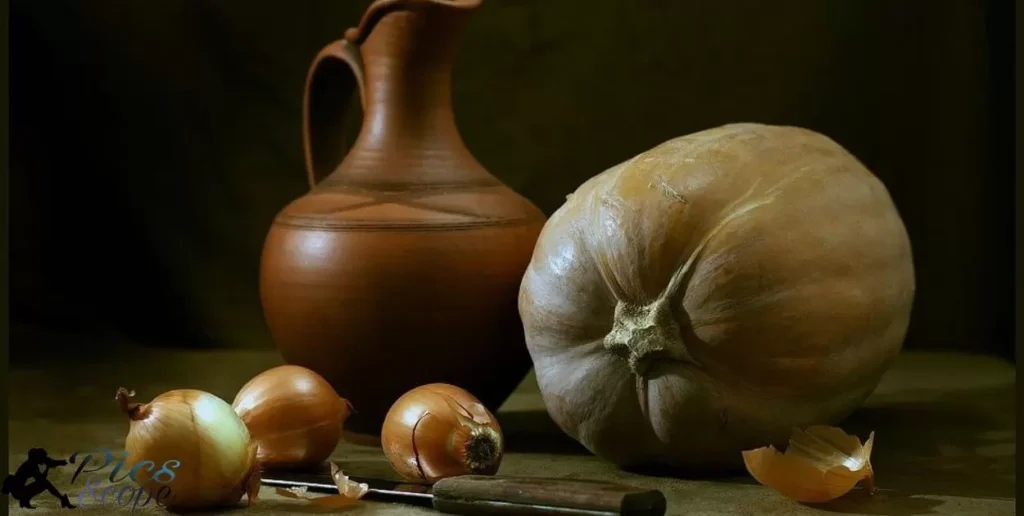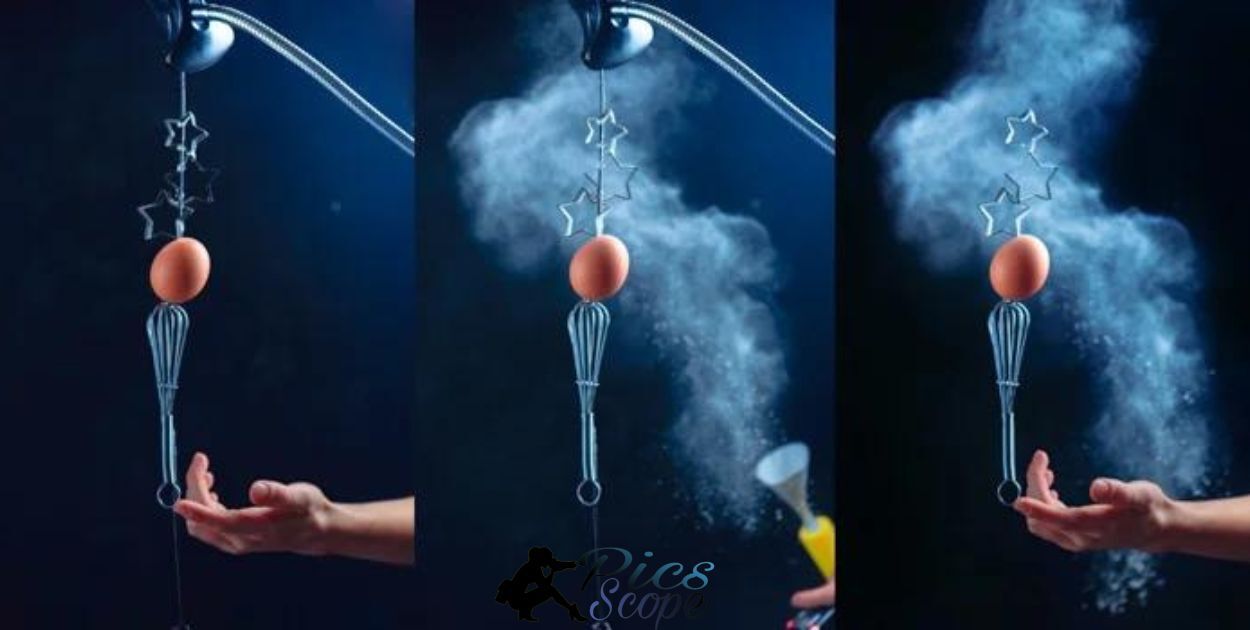Still life photography is the art of capturing inanimate objects, often arranged in a composition that tells a story or showcases beauty. These objects can include fruits, flowers, or everyday items, and the images are typically taken in a controlled studio environment.
Imagine the power of a single still life image to evoke emotions, tell a story, or even challenge the viewer’s perspective. With still life photography, you have the opportunity to create such masterpieces. By learning the techniques and tips, you’ll be able to capture the essence of your subjects and create stunning images.
To create captivating still life images, consider these tips:
- Choose a simple, yet interesting subject that tells a story or conveys a mood.
- Arrange your objects thoughtfully, ensuring they complement each other and create a harmonious composition.
- Use natural light or artificial light sources to highlight the subject and create depth.
- Experiment with different angles, perspectives, and compositions to find the most visually appealing view.
- Pay attention to the background, ensuring it doesn’t distract from the subject.
- Use props and accessories to add context and interest to your images.
Still Life Photography and its Unique Challenges

Still life photography is the art of capturing inanimate objects on camera. It can be a challenging and rewarding genre, requiring both a keen eye for composition and the patience to capture the perfect moment. Whether photographing a simple, singular object like a flower, or something more complex like a machine, a few fundamental principles will help you create beautiful and impactful still life images.
One of the unique challenges of still life photography is the need to create a compelling composition with objects that are not inherently interesting. Unlike portrait or landscape photography, still life photography requires the photographer to create interest and meaning through the arrangement of objects.
The Art of Composition and Lighting in Still Life Photography
Composition and lighting are two of the most important elements in still life photography. A well-composed still life photograph can be both beautiful and meaningful, while good lighting can bring out the texture and detail of the objects being photographed.
When composing a still life photograph, it is important to consider the placement of objects within the frame. The rule of thirds is a useful guideline for creating a balanced composition, but it is also important to experiment with different arrangements to find what works best for the specific subject matter.
Exploring the History and Evolution of Still Life Photography
Still life photography has a rich history that can be traced back to the early days of photography. In the 19th century, still life photography was popular among early photographers who were limited in their ability to capture portraits due to the technological constraints of needing to use an extremely long shutter speed.
Throughout the 20th century, still life photography continued to evolve and change, with photographers experimenting with new techniques and styles. Today, still life photography remains a popular genre among both amateur and professional photographers, with endless possibilities for creative expression.
Mastering Composition and Lighting

To create compelling still life images, focus on:
- Choosing suitable subjects
- Composition techniques
- Natural light (e.g., windows, golden hour) or artificial lighting (strobes, continuous lights)
- Lighting techniques: backlighting, silhouettes, low key, high key, light painting
- Experimenting with textures and colors
Key strategies:
- Natural light for warmth and authenticity
- Artificial lighting for precise control and dramatic effects
- Low key for dark and moody images
- High key for bright and airy images
- Light painting for creative expression
How to Create Balanced and Engaging Compositions in Still Life Photography
Still life photography offers a unique opportunity to craft visually appealing images by carefully considering composition and lighting. By guiding the viewer’s eye through the scene, photographers can create engaging and balanced compositions.
To achieve this, photographers should:
- Experiment with various layouts and arrangements of objects, ensuring that the composition is not too cluttered or too sparse.
- Utilize the rule of thirds, placing the subject at one of the four intersections of a 3×3 grid to create a more dynamic and balanced image.
- Consider the use of negative space, which can help to emphasize the subject and create a sense of harmony within the composition.
- Pay attention to the relationship between objects, ensuring that they are arranged in a way that creates a cohesive and visually pleasing scene.
The Role of Lighting in Still Life Photography: Techniques and Tips
Lighting is a critical element in still life photography, as it can create mood, add interest, and highlight textures. Photographers have a variety of lighting techniques at their disposal:
- Natural lighting: This timeless choice casts gentle shadows and highlights textures, creating a warm and authentic atmosphere.
- Artificial lighting: Studio strobes or continuous lights offer precise control over the light’s direction and intensity, allowing photographers to sculpt their subjects and create dramatic effects.
- Backlighting: This technique adds a trace of magic and drama to images, producing a stunning halo of light around the subject’s edges. It is ideal for creating striking silhouettes and adding drama to compositions.
- Low-key photography: This type of lighting creates a dark and moody atmosphere, highlighting specific elements of the subject and drawing attention to them.
- High-key photography: This type of lighting produces a light and bright appearance with an airy vibe, requiring a bright or white background and large light sources to avoid harsh shadows and light the scene evenly.
Exploring the Use of Reflectors, Diffusers, and Modifiers in Still Life Photography
To enhance lighting and create a more polished look, photographers can use various tools such as reflectors, diffusers, and modifiers.
- Reflectors: These tools bounce light back onto the subject, filling in shadows and creating a more evenly lit image.
- Diffusers: These tools soften the light, reducing harsh shadows and creating a more flattering look.
- Modifiers: These tools shape the light, allowing photographers to create specific lighting effects and control the direction of the light.
By mastering composition and lighting techniques, photographers can create visually appealing still life images that engage and captivate their audience
Capturing the Perfect Shot
Still life photography is a genre that invites photographers to create visually appealing images featuring inanimate objects. To capture the perfect still life shot, one must consider several key elements that contribute to a compelling image.
First, the subject selection is crucial. Choose objects that are visually interesting and have the potential to tell a story. Arrange these objects in a way that is pleasing to the eye, avoiding a center-focused composition.
Second, lighting is essential for creating depth and dimension in still life images. Experiment with different lighting techniques, such as natural light, artificial light, or a combination of both, to achieve the desired effect.
Third, composition is a critical factor in still life photography. By experimenting with different angles, heights, and perspectives, photographers can create visually engaging images that draw the viewer’s attention to the subject. Fourth, a tripod is a valuable tool for still life photography, as it allows for sharp, clear images, especially when taking close-up shots or photos in low-light conditions.
How to Choose the Right Camera Settings for Still Life Photography
To capture high-quality still life images, photographers must select the appropriate camera settings.
First, choose a camera with a high resolution and image quality, such as a full-frame camera, to retain great detail in the objects photographed. Second, select a lens that offers sharp images, less distortion, and wider apertures, such as a prime lens, which is ideal for still life photography.
Third, set the camera to a low aperture to create a shallow depth of field, which helps the subject stand out while blurring the background. Fourth, adjust the ISO setting to balance the exposure and minimize noise in the image.
Understanding Depth of Field and its Impact on Still Life Photography
Depth of field is a crucial concept in still life photography, as it helps to separate the subject from the background, creating a pleasing effect and drawing the viewer’s attention to the subject. A shallow depth of field is typically used in still life photography, as it helps to isolate the subject and create a sense of depth and dimension in the image.
The Importance of Focus and Sharpness in Still Life Photography
Focus and sharpness are essential elements in still life photography, as they help to create a visually appealing image. First, ensure that the subject is in sharp focus, as this will help to draw the viewer’s attention to the subject.
Second, use a tripod to maintain sharpness, especially when taking close-up shots or photos in low-light conditions. Third, adjust the camera’s focus settings to ensure that the subject is in focus while the background is blurred. By understanding the importance of focus and sharpness in still life photography, photographers can create visually engaging images that capture the viewer’s attention and tell a compelling story.
Post-Processing and Editing
Post-processing is a crucial step in enhancing still life photography. It allows photographers to bring out the best in their images by making adjustments and adding creative elements. Common post-processing techniques for still life photography include basic standard edits in software like Lightroom, applying presets, and using tools like layers, masks, and blending modes in Photoshop.
While it’s important to strive for a good exposure and composition in-camera, post-processing can significantly enhance the final result, allowing photographers to realize their creative vision and make their images more aesthetically pleasing.
How to Enhance Your Still Life Photography with Post-Processing Techniques
To enhance still life photography through post-processing, photographers can utilize various techniques. This may involve making basic standard edits in software like Lightroom, applying presets to quickly experiment with different styles, and using tools like layers, masks, and blending modes in Photoshop to add depth and interest to the images.
Post-processing allows photographers to push their images into the “Wow Category” by adding extra depth and creativity, ultimately contributing to the visual impact of the still life photographs.
The Role of Color Grading and Color Correction in Still Life Photography
Color grading and color correction play a significant role in still life photography. These post-processing techniques allow photographers to enhance the mood, atmosphere, and visual appeal of their images by adjusting and fine-tuning the colors to achieve a desired look.
By carefully applying color grading and correction, photographers can create a cohesive and captivating visual narrative in their still life images, further elevating the overall quality of their work.
Exploring the Use of Layers, Masks, and Blending Modes in Still Life Photography
In still life photography, the use of layers, masks, and blending modes in post-processing software like Photoshop can significantly enhance the visual impact of the images. These tools allow photographers to add depth, texture, and interest to their still life photographs, creating a more dynamic and compelling final result.
By experimenting with layers, masks, and blending modes, photographers can push the boundaries of creativity and storytelling in their still life images, ultimately creating visually stunning and engaging compositions
sharing Your Work and Building a Portfolio
Sharing your still life photography work and building a portfolio is essential for showcasing your skills and attracting potential clients or employers. A portfolio is a collection of your best work, accompanied by an explanation of the context, process, and outcome of each project.
To present your still life photography to a wider audience, start by defining your goals and target audience. Tailor your portfolio to showcase your best work that aligns with your goals and target audience.
Organize your portfolio in a way that makes sense to your target audience. You can organize your portfolio by type of work, industry, or chronologically. Make sure to include a brief introduction that highlights your skills and achievements and provides context for your work.
Building a Strong Portfolio and Showcasing Your Work
To build a strong portfolio and showcase your work, start by gathering your best still life photography work, including completed projects, case studies, and other relevant work samples. Focus on quality over quantity and choose work that showcases your skills and achievements.
Organize your portfolio in a way that makes sense to your target audience. You can organize your portfolio by type of work, industry, or chronologically. Make sure to include a brief introduction that highlights your skills and achievements and provides context for your work.
Showcase your process by explaining your approach, the challenges you faced, and how you overcame them. This will demonstrate your problem-solving skills and provide insight into your work style.
Keep your portfolio up to date by removing outdated work and adding new projects as you complete them. This will show that you are actively engaged in your work and continuously improving your skills.
Networking and Collaborating with Other Still Life Photographers
Networking and collaborating with other still life photographers can help you improve your skills, gain exposure, and build relationships in the industry. Joining photography groups or clubs, attending photography workshops or conferences, and participating in online photography communities are great ways to network with other photographers.
FAQ’s
How do you set up a still life for photography?
To set up a still life for photography, start by selecting visually interesting objects and arranging them in a pleasing composition. Pay attention to lighting, background, and the story you want to convey through the arrangement.
What are the 4 types of still life photography?
The four types of still life photography are “created still life,” “found still life,” “still life product photography,” and “flat-lay still life photography.” Each type focuses on different subjects and techniques, offering a variety of creative opportunities for photographers.
What camera setting for still life photography?
For still life photography, set the aperture to the largest f-stop possible considering the lighting situation. This helps create a shallow depth of field, allowing the subject to stand out while blurring the background. Additionally, adjust the ISO to balance exposure and minimize noise in the image.
What makes a good still life image?
A good still life image is characterized by skillful lighting, thoughtful composition, and attention to detail. It should capture the beauty and essence of inanimate objects, evoking emotions and telling stories without the need for human subjects
Conclusion
Creating still life photography requires attention to detail, composition, and lighting. To capture the perfect shot, select visually interesting objects, arrange them in a pleasing composition, and experiment with different lighting techniques.
When building a portfolio, define your goals and target audience, gather your best work, organize your portfolio, showcase your process, provide context, keep it up to date, and share your portfolio. By following these tips, you can create visually appealing still life images and showcase your skills and achievements to potential clients, employers, or university programs.







